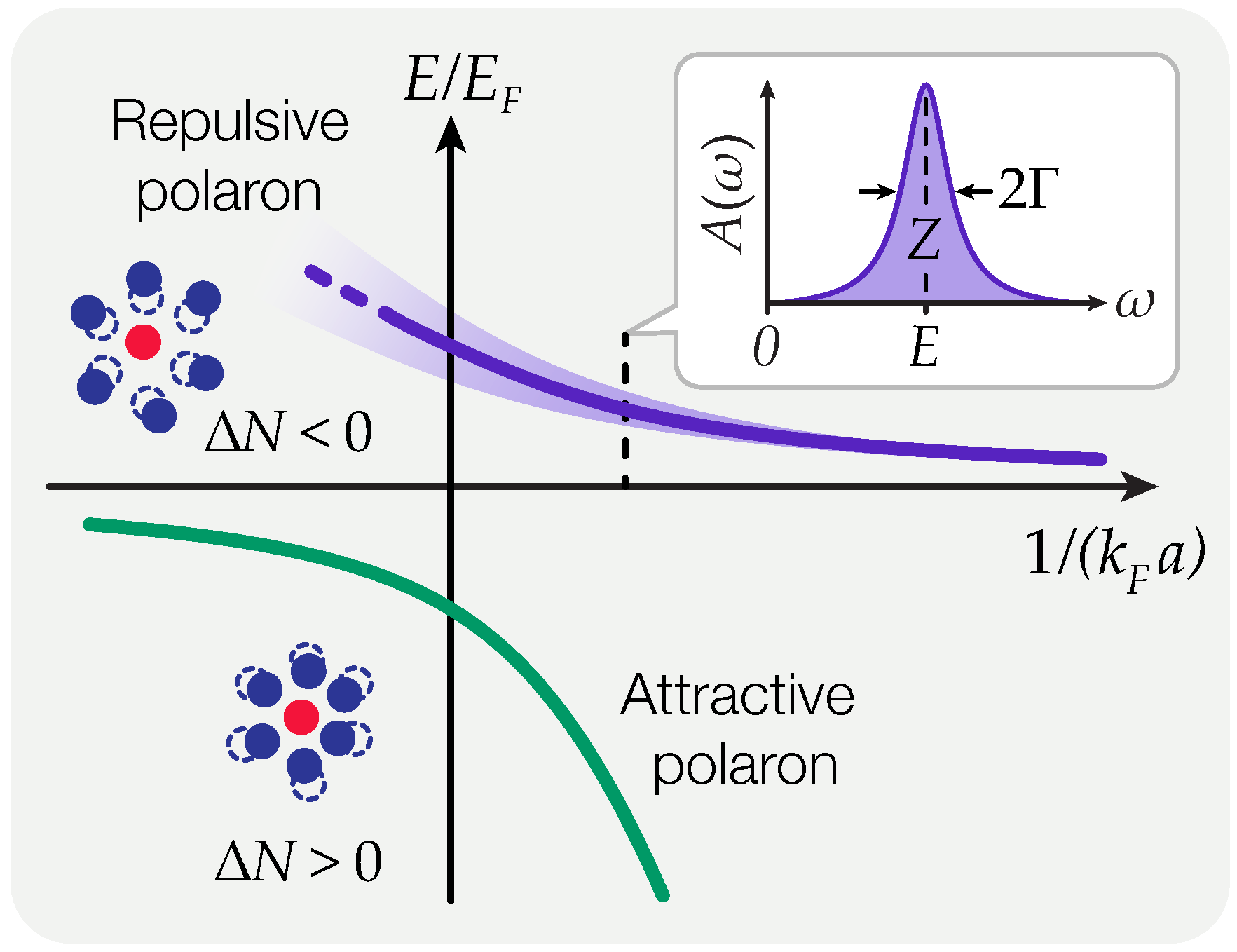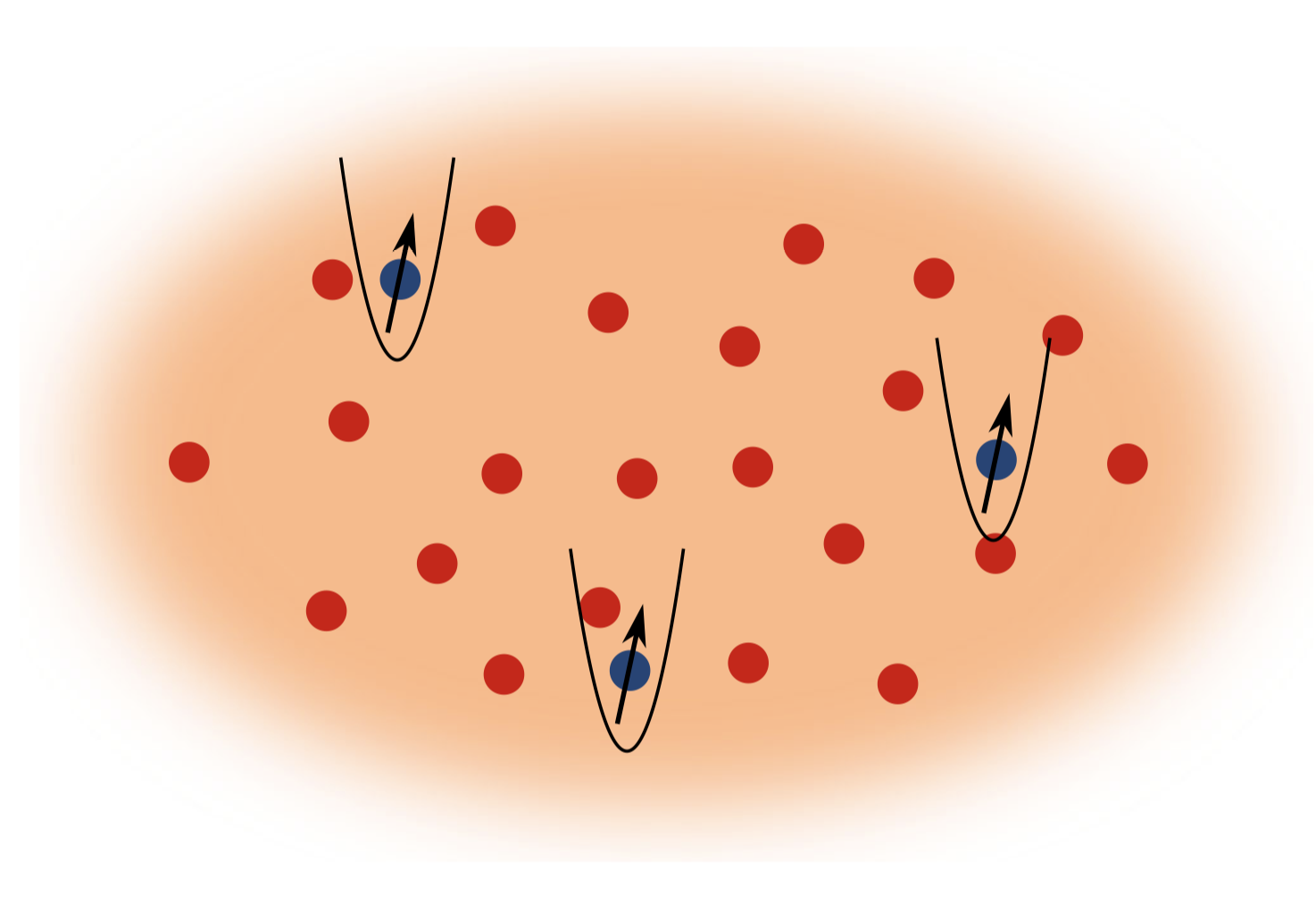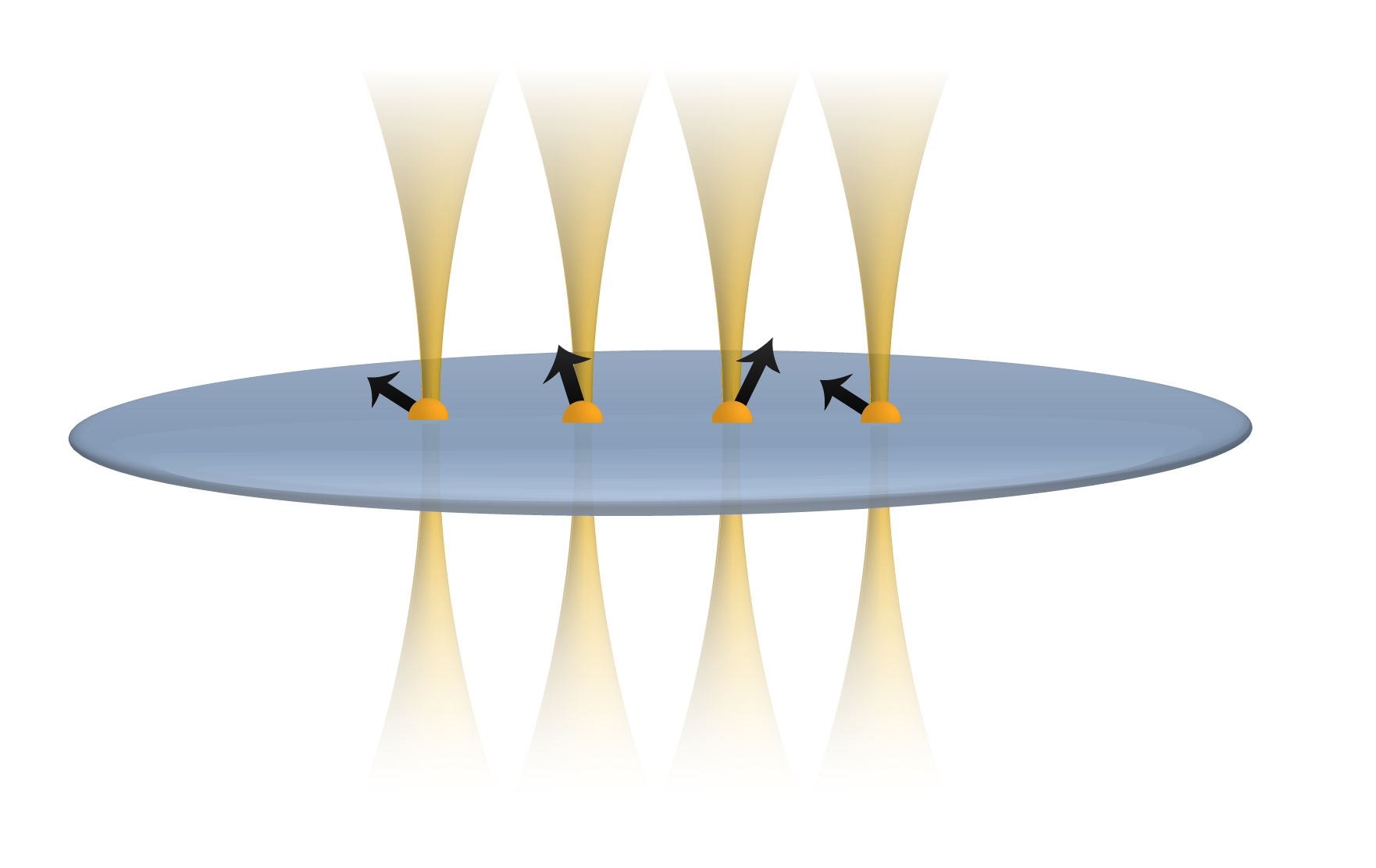Strongly interacting quantum impurities
Quantum impurities in ultracold atomic systems
The problem of an impurity coupled to a bath lies at the heart of numerous quantum many-body phenomena. From a theoretical point of view quantum impurity problems provide a minimal framework for gaining insight on the properties of multi-component systems, both in- and out-of-equilibrium. What's more, some of the most interesting properties in solid-state systems arise from the interaction between electrons and impurity degrees of freedom. Depending on their nature, impurities can couple to the bath in different ways, leading to a rich, genuinely strong correlation phenomenology dominated by impurity-bath interactions.Ultracold atoms provide an interesting playground -- and complementary to traditional solid-state materials -- for the investigation of impurity problems. Their high degree of controllability allows to prepare on-demand impurity model systems, where parameters such as impurity concentration and mobility can be controlled accurately. Moreover, the typical time scales involved in the ensuing many-body dynamics, related to the Fermi energy in fermionic systems, are much slower for atomic systems then for electronic ones. This makes ultracold atoms a suitable platform for tackling open questions concerning the out-of-equilibrium dynamics of impurity problems, which can be investigated with interferometric probes [Cetina et al., Science 354, 96 (2016)].
The peculiar level structure of alkaline-earth-like (AEL) atoms, such as ytterbium, makes them optimal candidates for the exploration of impurity physics in the strongly interacting regime. In particular, the metastable clock state allows to implement two-orbital systems, where atoms in the ground and clock states can be selectively addressed. The ultranarrow clock transition also provides a ultra-precise spectroscopic probe which can be leveraged for high-resolution interferometric measurements. Combining these features with recently demonstrated tweezer-trapping of the fermionic 171Yb isotope [Jenkins et al., Phys. Rev. X 12, 021027 (2022) and Ma et al., Phys. Rev. X 12, 021028 (2022)], we will investigate the physics of fermionic quantum impurities (spinless or spinful) with single atom resolution.


